Prekinder to Grade 2 Mathematics
Spinners and Probability
Spinners and Probability
Have you ever played a board game that used a spinner instead of dice to tell you how far to move on your turn? Maybe you've played one with a spinner that told you which direction to move, or who had the next turn. Apart from games, we can use spinners for probability experiments. Sometimes people even use spinners to help them make decisions.
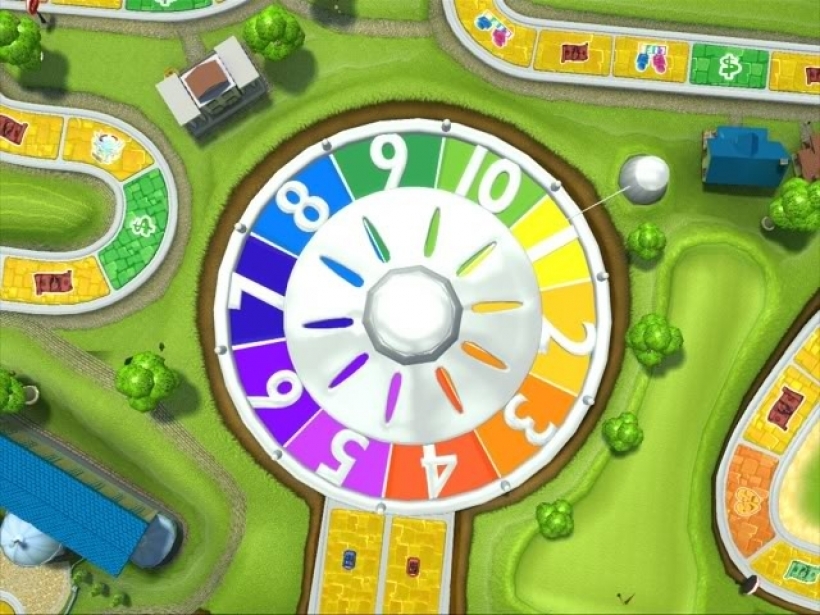
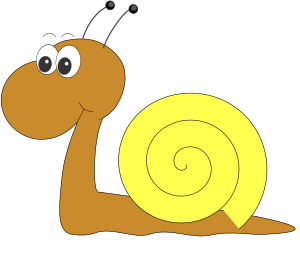
That's just what Gus the snail is about to do. His friends have told him that it's time to paint his shell a different colour. Gus can't decide which colour to choose, so he's decided to use a spinner to help him with the decision. His friend Christo has agreed to make the spinner for him.
Gus' friend Christo really likes green, so he wants to be certain that Gus will paint himself green. The best way to do that is to design a spinner like this, so there's no chance that the pointer will land anywhere else but green.
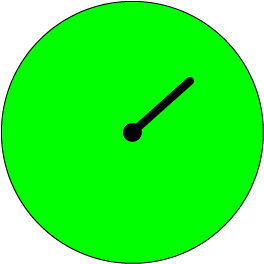

Gus isn't convinced he should paint himself green. He has a niggling feeling that red might be a better colour for him. To keep him happy, Christo designs another spinner that will make it likely that he will choose green, and unlikely (but still possible) that he will choose red. It might look something like the one in the picture. Do you see how most of the spinner is green, but just a small part (in this case \(\dfrac{1}{4}\)) is red? The arrow is much more likely to land on part of the spinner coloured green than it is to land on part coloured red.
Now Gus' friend Gloria has suggested he should paint his shell pink. Christo really hates pink, so he designs a spinner with no pink on it at all. It's now impossible for Gus to spin up the colour pink. Instead, this spinner makes it equally likely for Gus to spin up blue, green, yellow or red. The parts of the spinner painted in these colours have the same size, so it's equally likely for the spinner's needle to land on each of them.
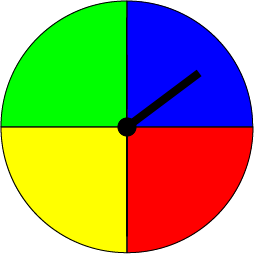
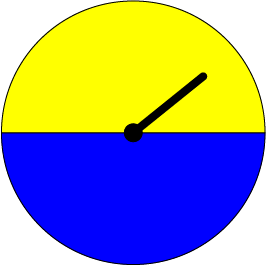
Gus has finally narrowed it down to two colours. He will either stick with his yellow shell or paint it blue. Although he's disappointed about the green, Christo designs yet another spinner. This time half of it is yellow, and the other half is blue. Both colours cover the same amount of the spinner. So, there's a 50-50 chance that, when Gus spins this spinner, it'll land on yellow, and a 50-50 chance that the arrow will land on blue.
Well, what do you think of Gus' new look? Can you guess which colour that last spinner landed on?
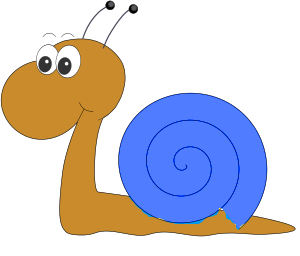
Description
This mini book covers the core of Math for Foundation, Grade 1 and Grade 2 mathematics including
- Numbers
- Addition
- Subtraction
- Division
- Algebra
- Geometry
- Data
- Estimation
- Probability/Chance
- Measurement
- Time
- Money
- and much more
This material is provided free of cost for Parent looking for some tricks for their Prekinder, Kinder, Prep, Year 1 and Year 2 children
Audience
Grade 1/Year 1, Grade 2/Year 2, Prep, Foundation, Kinder and Pre-Kinder
Learning Objectives
These lessons are for kids aged 4-8 with the core objective to expose their brains to concepts of addition, subtraction, division, algebra and much more.
Author: Subject Coach
Added on: 6th Apr 2018
You must be logged in as Student to ask a Question.
None just yet!